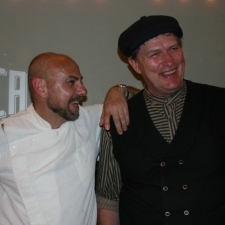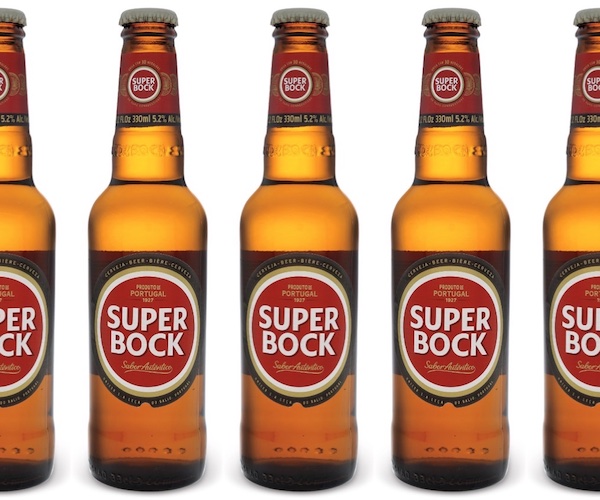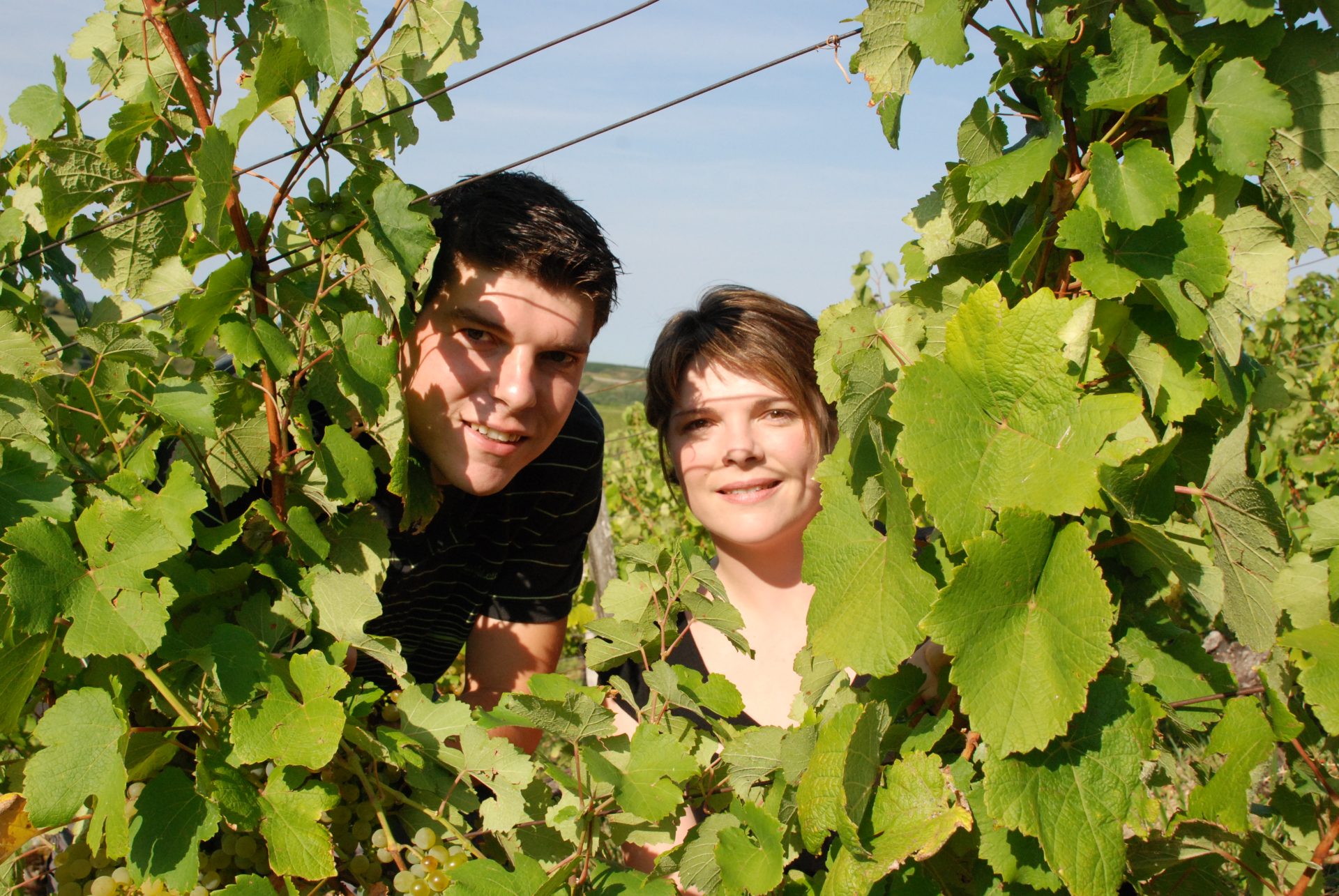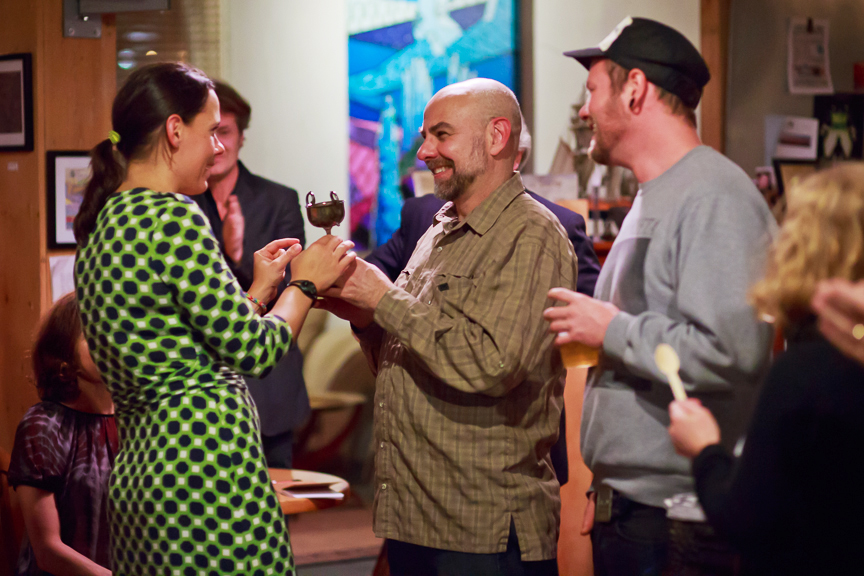by Kelly Jones

Chris McDonald, Doug Penfold and Michael Schmidt at Cava. Photo: Kelly Jones
Raw milk advocate Michael Schmidt has been pushing for government collaboration on a scientific study that explores the effects and health benefits of raw milk versus pasteurized. [See Kelly Jones’ profile of Schmidt from GFR0210 here – Ed.]
In December 2009, after more than a decade and a half of waiting, and in anticipation of a ruling that would eventually find Michael innocent of charges filed against him for selling unpasteurized milk from his Durham co-op, he decided to take things into his own hands.
Calf A and Calf B were born just days apart at Schmidt’s Glencolton Farms. For two weeks, the calves were fed colostrum, then examined by a licensed veterinarian; both weighed approximately the same weight at the beginning of the feeding trial. For a period of five months after that, one calf was given raw milk from its mother and the other fed store-bought pasteurized homogenized milk (at a cost of more than $5,000). Schmidt and his team observed the growth, well-being, and development of the calves.
An astounding range of differences was noted during the study—with the raw milk–fed calf surpassing the other in weight gain (200 kilograms to 115 kilograms), in a more natural texture and smell of manure, in a more alert behavioral existence, and in a shiny coat of hair versus the pasteurized milk–fed calf’s dull and falling-out coat. It was clear that one animal was healthier than the other. Michael and long-time friend and fellow food activist Chris MacDonald of Cava Restaurant, along with sous-chef Doug Penfold, decided to see if taste buds could also render a judgement.
On June 1, 2010, I joined Michael, Chris and Doug, as well as approximately sixty chefs, good food fighters, restaurant regulars, and media at A Tale of Two Calves. The sold-out event was held at Cava, Chris’s restaurant of four years. Exclusive wine agent Bernard Stramwasser, from Le Sommelier, paired and poured an interesting selection of sustainably produced wines to accompany the multi-course meal of veal.
The first two courses brought comparative plates from Calf A and Calf B—calves livers “anticuchos” followed by eyes of round with line-caught albacore sauce and “tete de veau” terrines with caper sauce. Furious notebook scribbling, picture taking, and whispering ensued, while the gathered group tried to discern which protein portion had been prepared from the raw milk calf and which from its pasteurized counterpart.
Veal and raw milk featured in the remaining four small plates, each showcasing MacDonald and Penfold’s incredible talent and rustic-modern approach to food. Marrow dumplings and handpicked cattail shoots bobbed in a thin, piping consommé; immaculately cooked, smoky morels, thick, al dente white asparagus shoots, and roast potatoes comprised the starch quotient to a juicy slab of roast veal; the textures of cubed quince and grainy toast added interest to a firm, thick slice of raw milk–Swiss cheese; and sherbet made with field-fresh strawberries and raw milk played partner to a piece of comforting rhubarb gateau Basque.
Before the big reveal, Michael asked the room of gastronomic enthusiasts which calf they believed was fed raw milk. (He hadn’t even let Chris in on the secret when he’d delivered them to the restaurant.) Surprisingly, a show of hands found the room was more or less evenly split between Calf A and Calf B, with a confused few—including myself—believing it was a trick question (I preferred the lighter, milder liver of Calf A and the moister loin and terrine of Calf B). Were our inclinations based on actual taste preferences or were we making choices based on familiarity of taste?
Whatever the reason, one opinion in the crowd remained constant: every palate, trained or otherwise, detected differences in the appearance, texture, and taste of the first two comparative courses.
These dissimilarities on the plate no doubt stemmed from the differences in the physical state of the animals—the pasteurized homo milk–fed calf, also known as Mr. Pasteur (eventually revealed as Calf A) and the raw milk–fed calf, named Mr. Rawky (aka Calf B). It’s interesting to note that, in the kitchen, Chris discovered variations in the animals’ internal organs too: the raw milk–fed liver, for example, was not only larger, but it also boasted a deeper red colour and a firmer texture.
The Taste of Two Calves event didn’t set out to prove that raw milk–fed calves taste better across the board. Nor does Michael infer that one study involving just two calves qualifies as conclusive evidence that all calves everywhere would benefit from the consumption of raw milk versus pasteurized. But the event certainly draws (more) attention to the issue and makes the point that more research is needed. Especially delicious research.
 Kelly Jones is a freelance writer and editor. She teaches Food Writing at George Brown College.
Kelly Jones is a freelance writer and editor. She teaches Food Writing at George Brown College.








What a delicious meal indeed! Well done!!